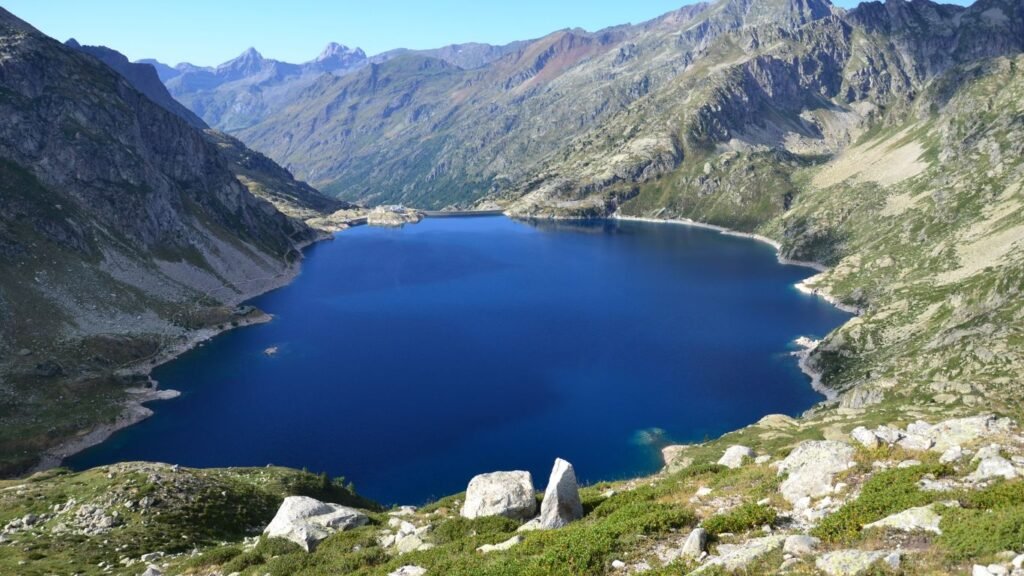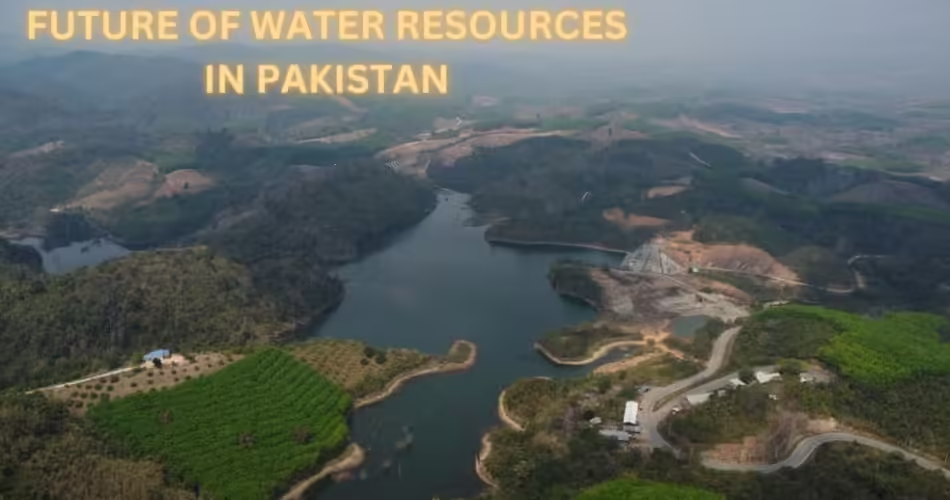This blog will inform you about the future of water resources in Pakistan. First it will describe what are water resources and why are they important for a Country. Secondly it will shine a light on Past Condition, Present Condition and Future Condition of water resources in Pakistan. At the end it will introduce the Strategies to Conserve Water Resources in Pakistan.
1. Introduction To Water Resources:
The survival on earth is basically depend on three resources which are
1. Water
2. Air
3. Soil
Water resources are natural resources of water that are potentially useful as source of water supply.
97% of water on earth is salt water and only 3% of fresh water slightly over two third of this is frozen in glaciers and polar ice caps.
Natural gift to human. Among which water is the most important component as it forms the basic medium for origin of life.
Water is not only important for life but also play a role in social economic and environmental development of world. But with fast development of society water consumption increases.
Currently, only 20% of country’s population has access to clean drinking water. The remaining 80% population depends on populated water primarily contaminated by sewage and secondarily by fertilizer, pesticides, and industrial effluent.
Pakistan consume 93% water for agriculture (Global average is closer to around 70%)
The Indus River system contains most of Pakistan surface and groundwater resources. In 1951 the surface water availability per capita was 5260 cubic meter per person. By 2016 that had fallen to close to 1000 cubic meter.

2. Water Resources in Pakistan:
1: Past Condition of Water resources:
Freshwater sources while renewable in the long term have finite withdrawal limits. The per capita availability of water has decreased from 5,300m3 per person per year in 1951 to less than, 1,100m3 per person per year in 2007 owing to population growth. Pakistan is heading inexorably into the category water-stressed countries, defined as having less than 100m3 .The mean value of inflows into the Indus Basin is 187 billion m3, with a 20% chance of not exceeding 148 billion m3 in any given year.
After India has made all the withdrawals permitted to it under the Indus Basin Treaty the long-term availability of surface water to Pakistan will fall to 173.6 billion m3. Of this volume, 130 billion m3 are already diverted at canal heads. Groundwater is a secondary or derived source. Of the annual recharge to groundwater (estimated at 57-66 billion m3), roughly 49-52 billion m3 are already drawn up by tube wells and used most of the non-utilized recharge occurs in areas of saline groundwater.
2: Present Condition of Water Resources:
The poor state of Pakistan’s water resources gained international attention in 2018 due to speculation that the country could become absolutely water scarce by 2025. Pakistan’s two largest dams Tarbela and Mangla, both have reached their dead storage level. Pakistan’s water comes from a number of increasingly stressed sources, including rainfall, glacier runoff, rivers and groundwater. Only 8% of land receives 500mm rainfall per year. Around 60% of precipitation comes from monsoon rains (in June, July and August). Only 4% is for agriculture. The most importance and destruction causing drawback of present is Poor Management of water resources so if we start handling these resources with care and good management, we can avoid their depletion. Pakistan have 1038cm3 availability of water in 2020.
3: Future Condition of Water Resources:
Water resources of Pakistan are in great danger for the future. Water level of Pakistan have reached scarce level. Because of this our next generation is going to face severe Water scarcity in Pakistan if we will not apply with good management practices. We must have future remedies for the control of depletion of water resources in Pakistan so even the available water is being polluted everyday by industrial wastes, heavy metals, toxic chemicals and many other pollutants. 30% of diseases and 40% of deaths are because of unclean water.
We are able to treat only 8% of Pakistan waste water and other is left untreated. If the treatment of water resources will remain unchanged, then clean and drinking water will be finished from Pakistan within 10 years because of its depletion. It is a strong prediction that WORLD WAR 3 will be because of Water Distribution in the world.
3. Methodology to Conserve Water Resources:
Following are some of the methodologies for conservation of water resources in Pakistan’s present and Future Conditions of water resources:
1: Rainwater Harvesting:
Rainwater harvesting is a very effective method of conserving natural water. It is a technique that is used to collect and store the rainwater. This is economic so enhance water and energy conservation. It fulfills the needs of water in water scarcity areas. Helps in raising the groundwater level. It can be set up at home or easily setup at any place.
2: Sustainable use of Groundwater:
One of the water conservation methodologies is to sustainably use of water. The sustainable use of water means uses water in a manner that it meets the present needs of the organism but also made it available to the future generation. The groundwater contributes 25%, and surface water contributes 75% to meet the needs of organisms. The demand for groundwater is rapidly increasing, and hence the level of groundwater goes on decreasing. The re-infiltration of water takes a long time, so there is a need for sustainable use of water.
3: Recreation of Traditional Water Resources:
The recreation or renovation of traditional water resources should be done. This is helpful to fulfill the need for water in scarcity areas. Renovation of these resources is necessary from time to time to ensure the working of these sources.
4: Use of Advance Irrigation Methods:
According to a study, 69% of water is used in the agricultural sector at the World level. Surface water is from canals and tanks while groundwater is from tube wells and well. The use of advance irrigation methods are very useful to save water resources by adopting efficient irrigation approaches that are the need of the hour. Drip and sprinkler systems save up to 75% out of the 90% of water that Pakistan uses for agriculture. While these new methods can increase yields in the already cultivable lands, they can turn arid land parcels in crop- producing areas as well. Water scarcity is a significant challenge already; deploying modern methods for watering crops can save Pakistan from becoming further water-stressed.
5: Flood Management and Dam Construction:
The flood is also one of the causes of wasting surface water. In order to conserve surface water, canal and construction of embankments are needed. The dam and reservoir construction are also one of the methodologies to reduce water crisis in Pakistan. The water collected in dams is for electricity generation. We can use these water reservoirs for activities like irrigation and household activities.
6: Protection of Water from Pollution:
Protection of water from pollution is also necessary. The quality of surface water and groundwater is deteriorates by pollution. The chemicals and other harmful substances which get in water resources cause water pollution. These polluting substances are also harmful to an organism living in water and also for the environment. Recently, the studies have shown that the level of arsenic is an increase in groundwater in many parts of Pakistan such as Multan, Lahore, etc.

4: Conclusion:
This report analyses the various aspects of water resources of Pakistan and presents a water conservation strategy. With the rapid growth of population and increased use of water, its supply is not meeting its demand over the time. Most of the water is facing pollution and unhygienic for drinking purpose both for human and animals. There is a need to analyses the existing water resources and recommending comprehensive conservation and management strategy in view of catering the planning requirements for the future. Every year due to floods a lot of water flows down towards sea and its inundation causes huge and irreparable losses to human lives, property and assets of public and private sectors.
For overcoming such menaces, small and there should be implementation of dam construction. Last, but not least, there is a need to switch the irrigation from traditional system to the directions of “Blue Revolution” which could meet the challenge of water shortages and water losses to a greater extent.
To learn about more topics, click the links below:


Comments